CURB APPEAL LANDSCAPING
It’s summertime and the season we all start working on the outside of our homes. Most of us like to spruce up our outdoor living spaces and plant flowers and/or shrubs that are pleasing to the eye for ourselves and for anyone that pulls up to our home. And if you can create that easy, DIY curb appeal on a budget, no less; what’s not to like?
Anyone that might be selling or buying a home knows how important curb appeal is. Even if you aren’t doing either of those, just pulling up to your home when you’ve got the curb appeal going on, just makes your heart smile along with the feeling of satisfaction from the work that will turn out so wonderful to look at.
Keeping Budget in Mind
I’m making my suggestions with budgeting in mind. Anyone who knows me, knows I’m a bargain shopper. But that doesn’t always seem possible with planting, depending on what you want to do in your yard. Or a plant or shrub may be a little more expensive than you want at the beginning, but may last 20 years with good maintenance and therefore saving you money in the long run.
My plant choices are based on “easy”. Easy for you to get, easy to take care of and should be fairly easy on the wallet. And if those plants are easy to take care of—well, who wouldn’t say ‘Yes’! So let’s get started.
Your best bet is to have a combination of foliage and flowering plants to make it more interesting to the eye by creating different heights and textures. You also want to choose plants and shrubbery that work in your zone or are native to your area. LOOK UP ZONE HERE. Knowing these few bits of information ahead of time will make things easier for you in the long run.
“As an Amazon Associate, I earn from qualifying purchases.”
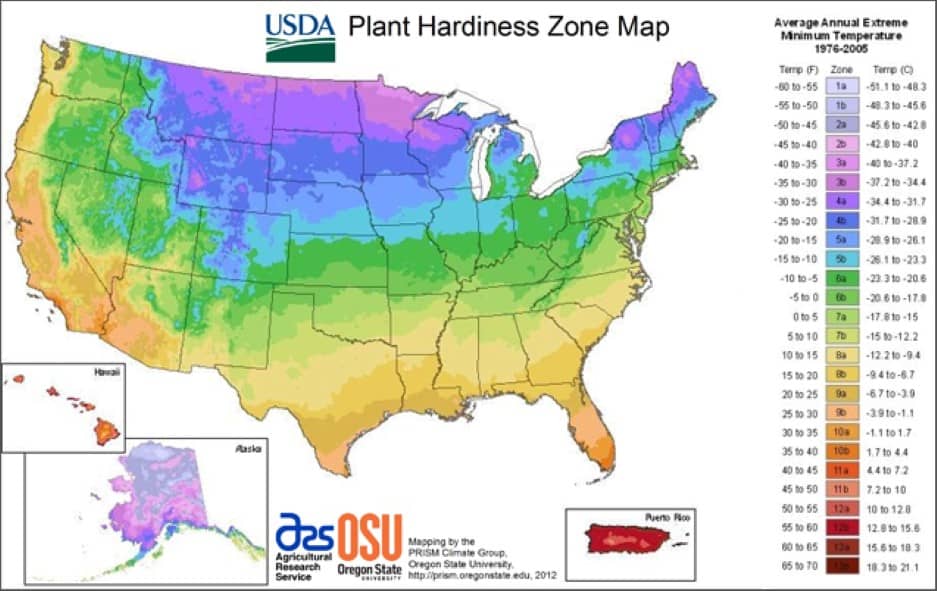
WEED AND DE-CLUTTER
No matter the reason why you want to add some curb appeal to your yard, there are some things that need to be done first, so the finished look will come together. The first thing I’m going to suggest is the one thing I really, really hate doing myself and that is weeding and decluttering.
Wherever you are planning on making changes in your yard, it’s best to do an overall survey of things first. You need to take notes on what plants you no longer want, are dead or dying so that you can get rid of them. And see what you already have that you may be able to split and use elsewhere, thereby saving some money for something else.
After that, the next thing to do is a thorough weeding. Absolutely anywhere you want to plant. While doing the weeding you also want to get rid of those plants that you decided you didn’t want. After finishing, you should then be able to look around and get a really good idea of what needs to be added, moved or taken out of your yard.
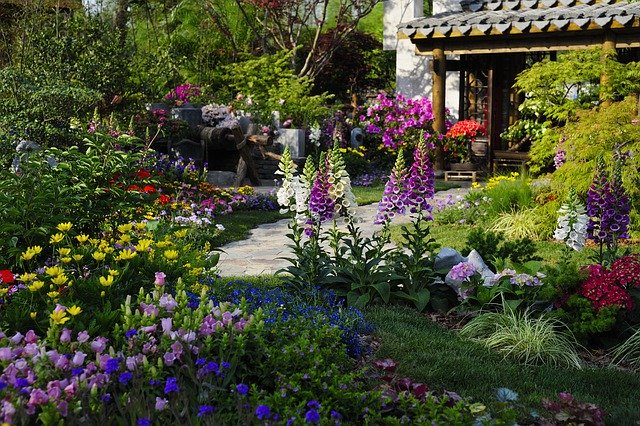
When looking at your yard and deciding where you want to put plants there are a few things that you want to think about.
**Too many colors can be a distraction to the eye
**A restriction in your color palette is better for giving you a more cohesive look
**You can use more plants, but try and stay in the same color palette family or bloom
Many of the following plants you may already be aware of and one or two—maybe not.
EVERGREEN SHRUBS THAT MAY OR MAY NOT FLOWER
Rhododendron – Zones 5-8
This is a hardy plant that is good for around your foundation as it helps hide a possible unsightly foundation or area of your yard. The rhododendron is slow-growing and comes in compact and dwarf sizes if you need them. All varieties are a showy plant when blooming and the smaller choices need less pruning to keep them under control.
The different size choices are good for planting in different areas where more height may be needed versus the shorter versions. They bloom in early spring with dark glossy leaves. Once their blooming season is over, the dark glossy leaves make for a nice backdrop for more of your flowering plants.
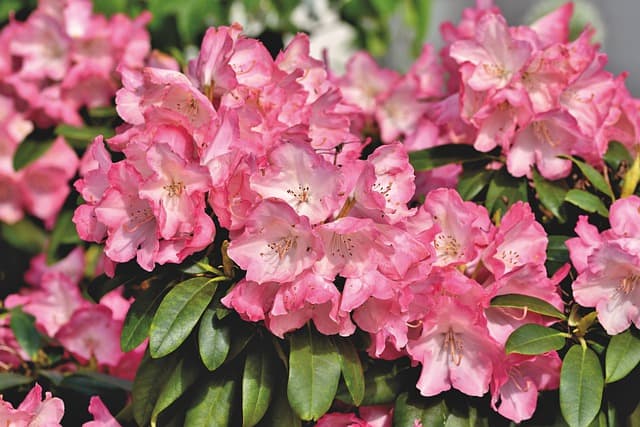

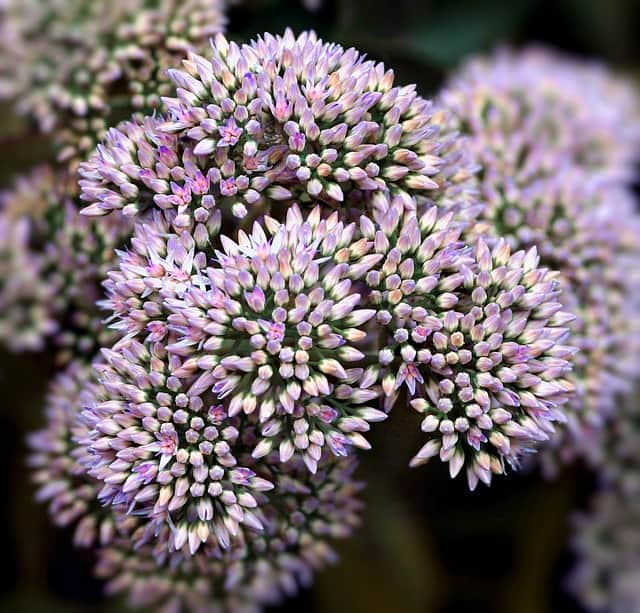
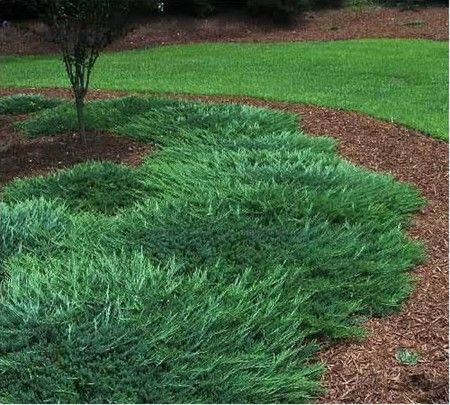
Hardy Hibiscus – Zones 5-9
Make sure that you get the “hardy” hibiscus and not the “tropical” hibiscus for the above planting zones. As the name states, the “tropical” cousin will not survive these zones.
But if you like big, bold and showy, the hardy hibiscus is for you. This shrub comes in many colors—yellow, red, white and pink, just to name a few. And with the show they put on, you’ll be glad to know that this hibiscus comes back year after year. It can tolerate partial shade but really prefers full sun.
Japanese Spirea – Zones 4-8
This is a long blooming plant that flowers from late spring to early summer. Japanese Spirea grows in a mound of pink or white little flowers reaching to between 4-6 feet high.
Juniper – Zones 5-9
This is a non-flowering ground cover that is good for filling in spaces where it seems nothing else will work. This is because it is a spreader (every year you’ll have more). So, a little juniper will fill in and go a long way in areas of your yard you may need a plant to fill in space.
Or it can fill up a lot of space if needed. Juniper is perennial and an excellent ground cover to prevent erosion like in a sloping area. It needs both full sun and some shade. (or sun most of day and then shade rest of day or visa versa). Basically, it’s a pretty hardy plant.
TALLER FLOWERING PLANTS
Catmint – Zones 3-8
This is one of my favorites because of its glorious color. Catmint grows 2-3 feet in height of tall spikes of clumped tiny blue or purple flowers. It looks similar to lavender and looks great in clumps throughout your garden for incredible splashes of color. This is a plant that deer like, so I have a little trick I’m going to share with you.
Rosemary – Zones
This is the tip when you have plants that deer like. Plant the rosemary in and around the deer yummy plants. The deer will walk the whole way around a field of rosemary to stay away from it; that how much they don’t like it. So if you get plants that the deer do like just intersperse those plants with some rosemary.
Coneflowers – Zones 3-8
These plants grow to between 2-3 feet tall. They are very resilient and actually thrive even with sandy type soil and through drought. Just make sure these plants get enough sun. That’s all they ask for. Coneflowers come in a variety of colors that include yellow, pink and orange and will bloom all summer long. Also known as echinacea.
Shasta Daisy – Zone 4-8
Who doesn’t like a daisy? The Shasta is a classic looking daisy that grows 2-3 feet and blooms in early summer and sometime again later in the season. To rebloom, the Shasta needs to be “pinched” as the blooms are dying. A Shasta Daisy plant does well in full sun or partial shade.
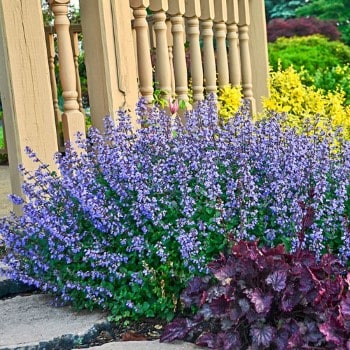


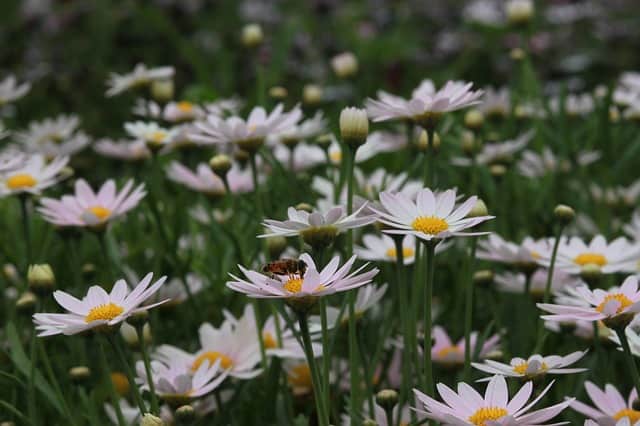
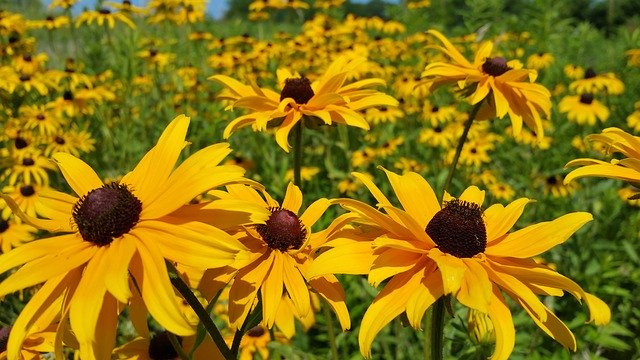
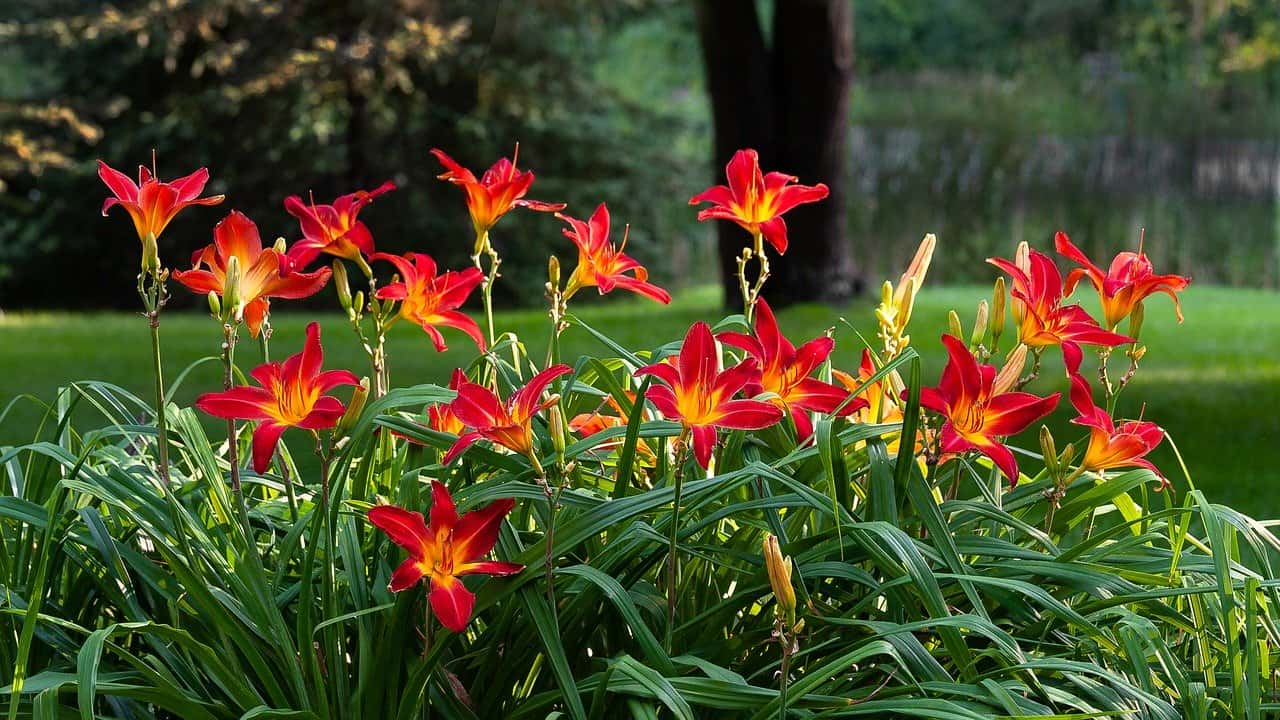
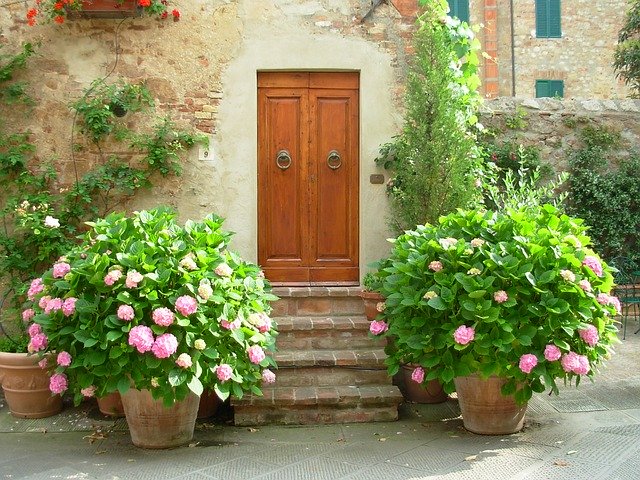
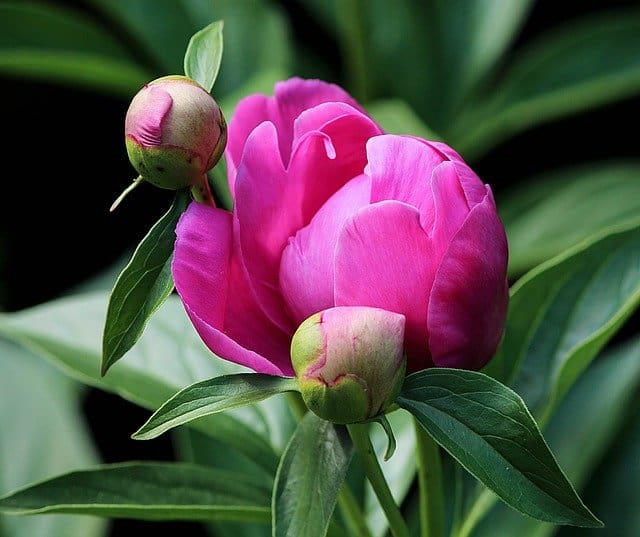
Black-Eyed Susan – Zones 3-9
Very few plants are easier to take care of than this one. This taller flower (2-3 feet tall) is heat and drought resistant and does well in sunny spots. It tolerates both wet and dry soil and isn’t bothered by the heat! No shade in your yard—no problem, this plant will be ok. The Black-eyed Susan is usually a lighter orange color or golden yellow; and blooms from midsummer to first frost.
Daylily – Zone 3-8
This plant needs to be planted in full sun, with moist and well-drained soil. Your daylilies will give your garden plenty of color with their bursts of orange, red and yellow blooms. And the best thing—these flowers will bloom the whole season, from spring until late summer. How great is that?
Hydrangea – Zone 4-9
This is a bush that doesn’t require very much care once it has been planted. Put your hydrangea in partial shade with rich well-drained soil and it will be a happy camper and give you nice big, fluffy blooms every summer. You just have to remember that this plant gets planted (root ball) in the fall to come up the following summer.
Peonies – Zones 3-8
A larger bush, I have to admit that this is one of my favorites when in bloom. The flower is big and bold, but at the same time the petals look delicate. A peonie bush is a long living plant that you’ll be able to enjoy for many years.
Peonies make a bold statement when clipped and put in a vase on the table for all to see.
SHORTER, FILL IN PLANTS AND FLOWERS
Hostas (Plantain Lilies) – Zones 3-9
Fills in large spaces, good for partial shade and full shade. Easy to divide and move around, so you can start out with two or three and within a few years, you can have many more. The deer love them, so use the rosemary tip around your hostas.
There are many varieties of hostas from fairly small to those with really huge leaves. In early summer they grow stocks that can get several feet high that then bloom delicate little flowers.
Hostas are good to use to border your garden and catches everyone’s eyes. Very good for curb appeal.
Creeping Phlox – Zones 4-8
Absolutely gorgeous filler plant, but don’t try to grow from seeds. You’ll have a much better outcome from cuttings or seedlings that are easy to find at any local gardening store. This plant needs space—lots of it.
Start your phlox at least 10-12 inches apart because as they mature, they will fill in rather quickly taking up the space that you thought looked sparse. Phlox is also a plant that likes to be divided when getting to big. They need only 4-6 of direct sun a day and a good watering at least once a week.
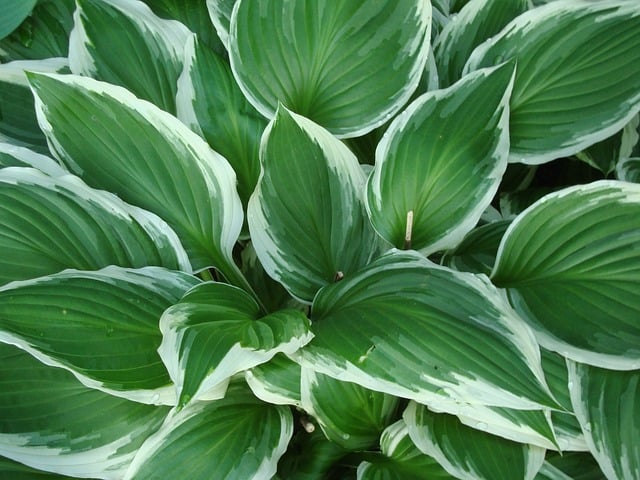
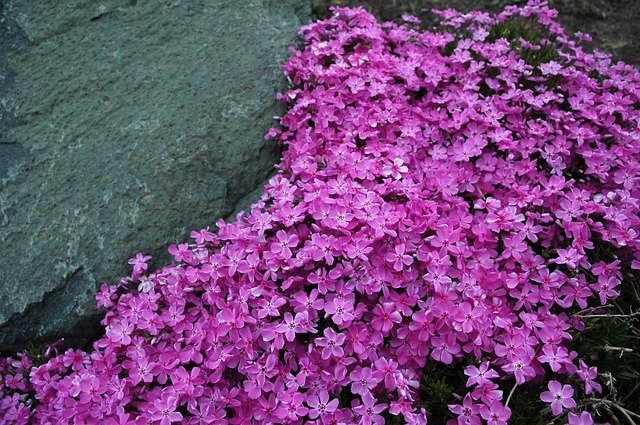
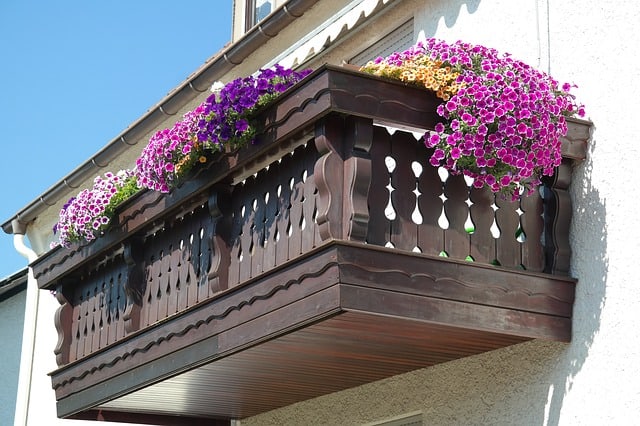
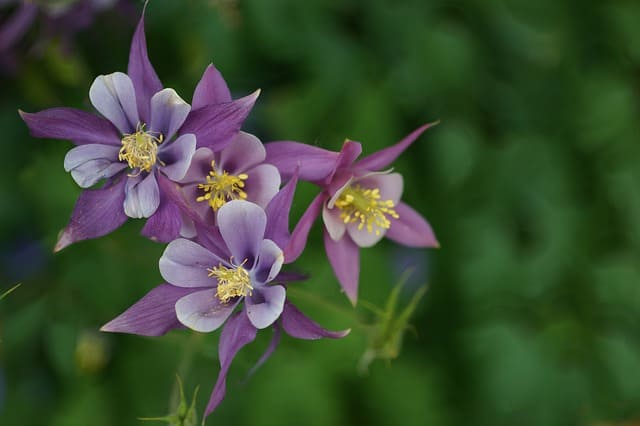
Petunias – Zone
I know, I know—this plant is everywhere, but it’s because it is such a joy to look at. And the color it brings to your landscape! This flowering plant is good for window boxes, hanging baskets, decorative garden border or just sitting in a pot on your deck. It’s that versatile. And with a few things to remember, this plant will continue to provide blooms throughout the season.
There is one type of petunia (Milliflora Petunia) that doesn’t need to be “pinched back”. All other varieties do. This just means that as the flower begins to die, “pinch” it off and it will be replaced with another bloom, making this plant look larger by the day
The petunia (the whole plant) needs at least 5-6 hours of full sun, regular pruning or “pinching”, frequent watering and fertilized. But the effort is worth it.
Columbine – Zones 3-9
Columbine is extremely hardy, comes in a variety of colors, often two-toned, can grow quite tall and blooms most of the summer. They can grow from 6 inches to almost 3 feet tall so look at the instructions before purchasing if you are looking for a specific growth height.
If you are looking to attract bees and hummingbirds, this is the plant to do it. Columbine can grow in full sun in cooler regions, but in the warmer parts of the country, partial to full shade is better. The soil should have adequate drainage for this plant to thrive.
VINES

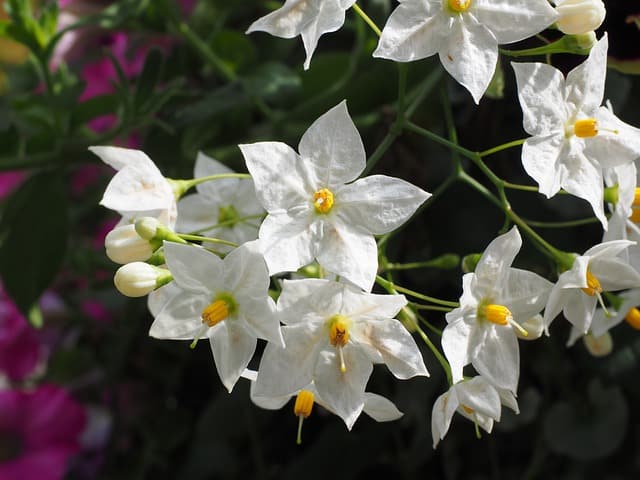
As I said at the beginning of this post, you need to pay attention if the plant you are choosing is a sun or shade lover. That’s very true with climbing vines. If you choose a sun loving vine, but plant in the shade, it will grow to the top of whatever you have available for the vine to climb. Once there it will bloom, but you may have a bare trellis.
Clematis – Zones 4-9
This is a great plant to use around your mailbox pole or a trellis. Since it needs something to grab onto, it will grow up and down the pole and with its colorful blooms your mailbox will look like its being held up by the plant rather than a pole. Just remember—this plant doesn’t bloom for two or three years after planting. But after that—it’s a joy for your eyes.
Clematis is a long-blooming plant of different size blooms and fragrances depending on the variety of plant that you have. If you want to add color to your landscaping, this is a plant to do that with; and there are many colors to choose from. This colorful plant needs at least 6 hours of sun every day to pull the blooms out. And it doesn’t tolerate drying out as it prefers moist, well-drained soil.
Star Jasmine – Zone 7B-10
This is a shade loving, fast growing climbers, so take into consideration where to plant it. The good thing about it is that star jasmine is low maintenance, but a slow starter growth-wise. After the first year, it takes off and you are good to go. The plant has small glossy green leaves that are evergreen in the warmer climates with small blooms to see between April and June.
Boston Ivy – Zones 4-8
This climber is a fast grower and will spread quite easily to cover any nastiness you may want to camouflage, like an old shed or garage. Boston Ivy is non-flowering, but is very low maintenance and hardy, grows in sun or shade and the foliage turns red in the fall.
Crimson Glory Vine – Zones
Crimson Glory is actually an ornamental grapevine. If you need a fast grower in sun or shade to cover an eyesore quickly then give this vine a try. This is not necessarily an easy plant to find, but it’s so pretty that I had to add it. In the fall, this vine turns a glorious color palette of purples and reds.
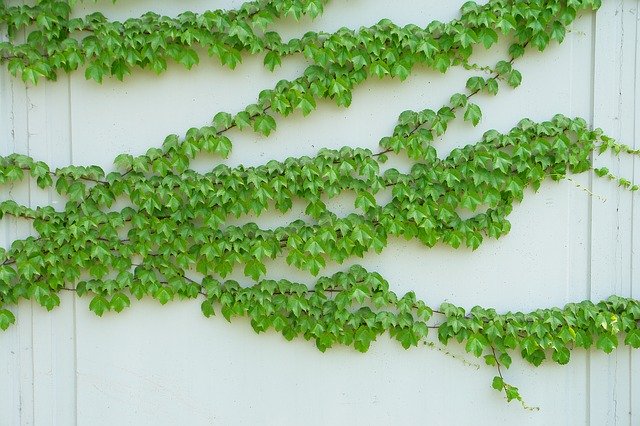
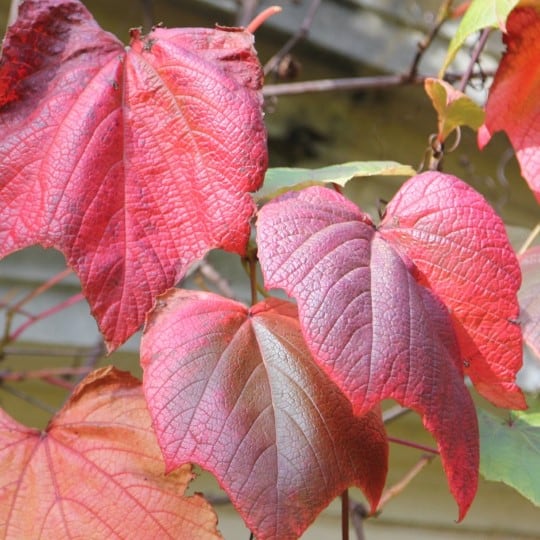
FINISHING TOUCHES
Now that we have gotten through several different types of plants to use in your yard, let’s think about some finishing touches that will pull everything together. Doing this gives your yard a pulled together look which is more appealing to your eye.
Cover your beds with some kind of covering. We all know and use mulch. But it’s not really the best thing to use up close to your home, as it can contain termites, so use the mulch in other places around your yard. Some alternatives to use instead are peat moss, some type of smaller rocks or lava rocks.
DIY Cement Stepping Stones
Do you have the need for a small path from the front yard to your back yard or from one garden area to another. To save money, try making the stepping stones yourself. The article gives step by step instructions. To dress them up you could add a bit of stain to them or make them whimsical as the girls in this post have done. I think I’m going to have to try this one myself.
DON’T FORGET THE MAILBOX AND FRONT DOOR AREAS
Mailbox
If your mailbox isn’t at your front door, then this is another place to do some planting to add that curb appeal you are looking for. You have many options from the climbing flowering vines, to flowers that grown around a foot to smaller plants just around the bottom of the mailbox pole.
Front Porch and Door
Paint your front door a complimentary color to your house and trim. Remember, your front door is the first impression of your home, so pretty it up. A fresh coat of paint does wonders for the front door, then add a wreath to it and a new doormat.
Spruce up those house numbers and make them big enough to actually see from the street, making it easier for people to see your address.
If you have space, add a small seating area with some bright colored pillows and a container or two filled with a combination of flowers and vines. Now picture that in your mind and see how much you would love coming up to a front door with these elements in front of them.
SUMMARY
I know this seems like this is a lot of work, but the outcome will create a curb appeal that will rival your neighbor’s. You know the one with the green thumb that you envy every summer. So don’t be afraid of the work, just keep in mind what your yard will look like when you are finished.
Want to continue on into your home? See my post on Easy, Low-Maintenance Indoor Plants.
Stay Awesome!
Cher
Relevant Reading
Easy Hacks To Live Below Your Means
If you enjoyed my post, pin it and share it—it would be a wonderful compliment!!
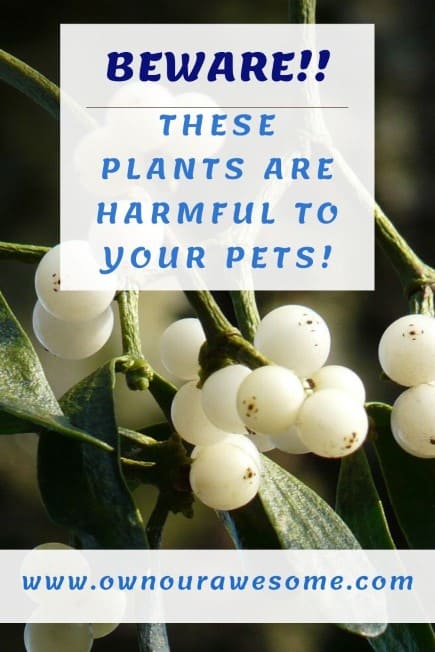
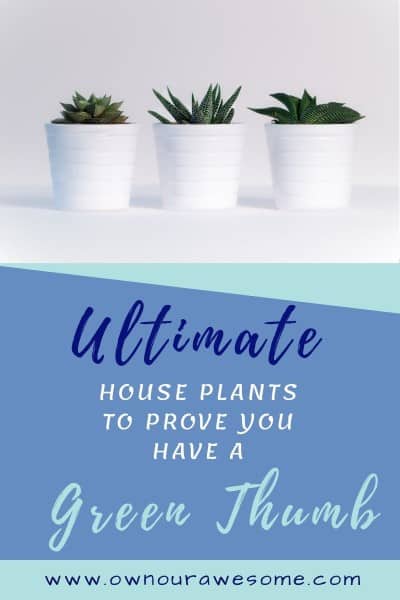

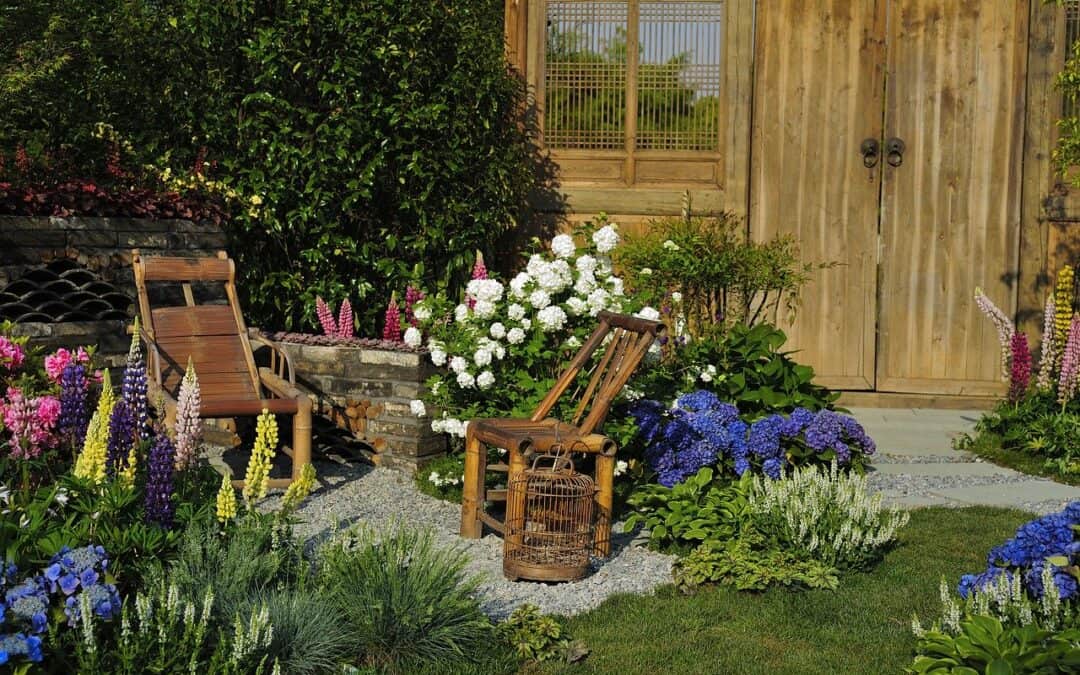







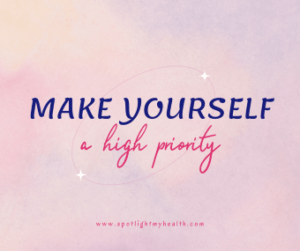
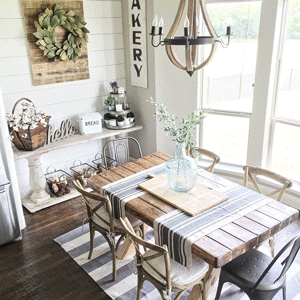
I have so many of these in my yard…especially the petunias. We went wild on the petunias this year.
Hiya Andrea:
Nothing wrong with going wild on the petunias. They are such a cheery, easy plant, that they add a lot to your yard, porch or deck. And the colors are definitely a pick-me-up. Glad you enjoyed the post!!
Stay Awesome,
Cher
I have most of these in my yard. Lol